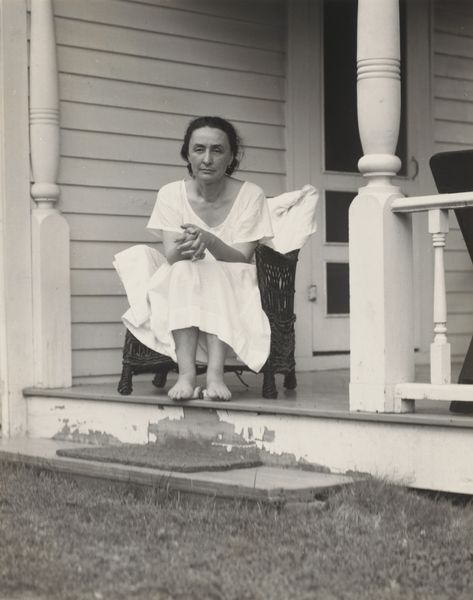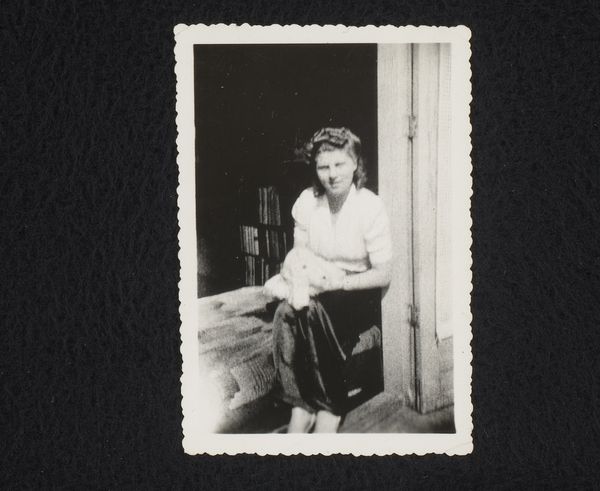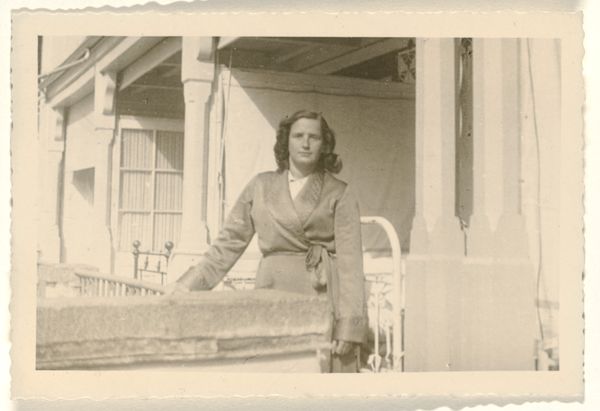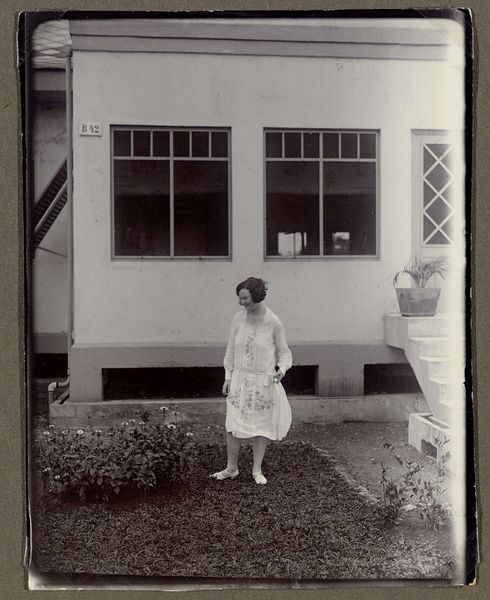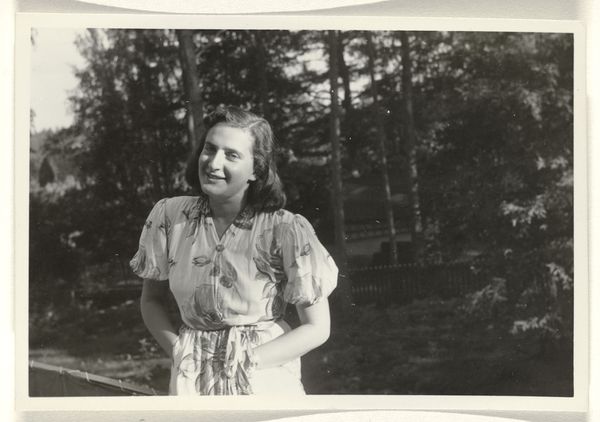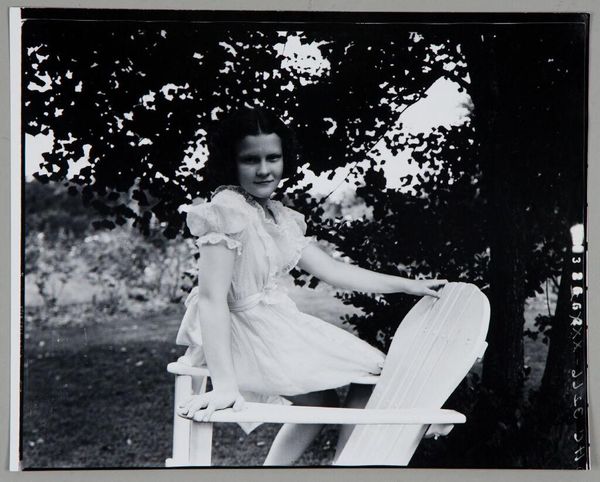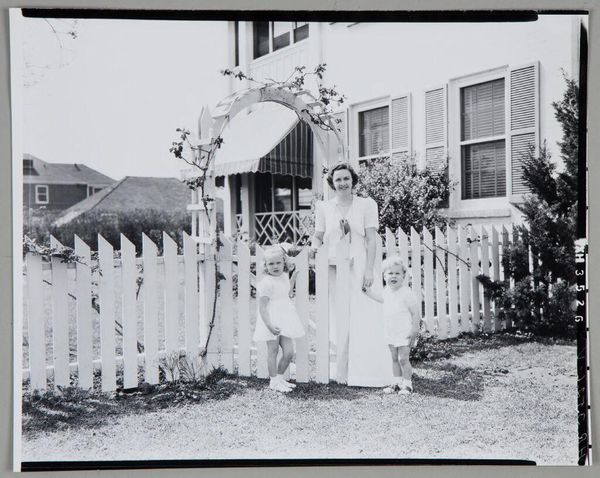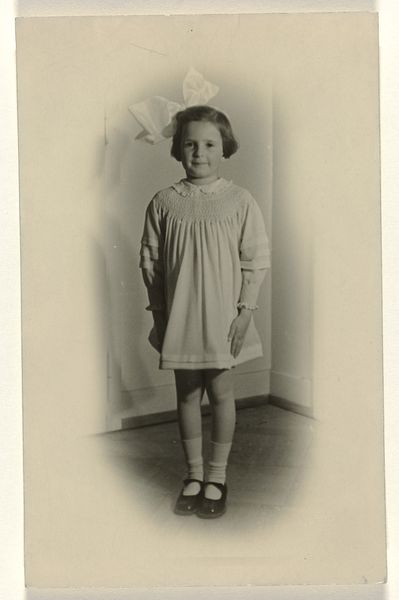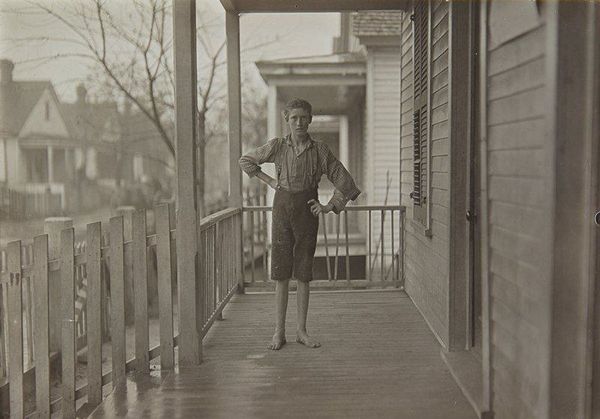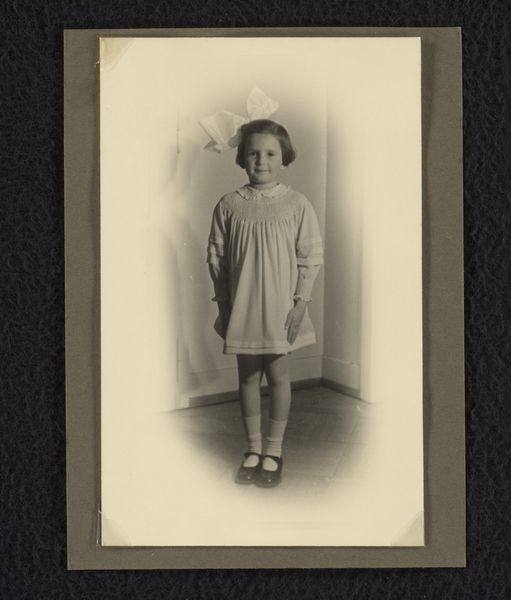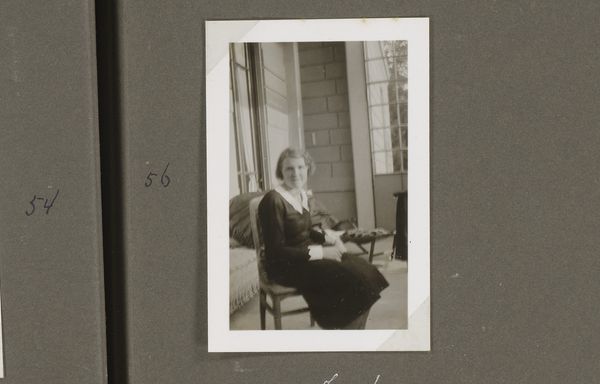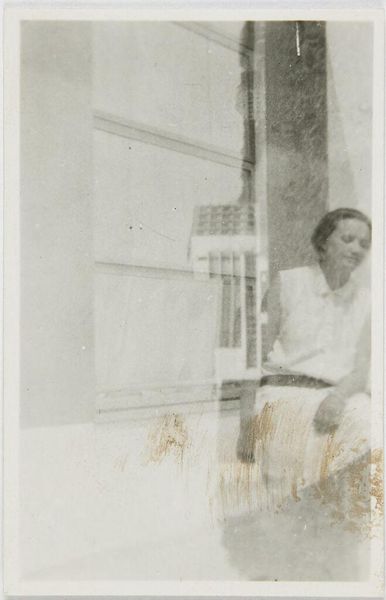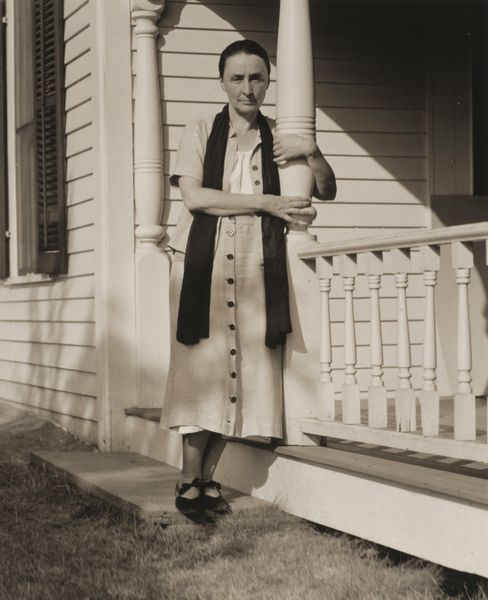
photography
#
portrait
#
wedding photograph
#
photo restoration
#
wedding photography
#
colourisation
#
archive photography
#
photography
#
culture event photography
#
historical photography
#
couple photography
#
cultural celebration
#
celebration photography
#
modernism
Dimensions: sheet (trimmed to image): 23.6 x 19 cm (9 5/16 x 7 1/2 in.) mount: 51 x 39.3 cm (20 1/16 x 15 1/2 in.)
Copyright: National Gallery of Art: CC0 1.0
Curator: Alfred Stieglitz’s portrait of Georgia Engelhard, captured in 1920, offers a strikingly simple composition. It is a rather unusual choice, in my opinion, for a photographic portrait of the time. Editor: Indeed. There's something inherently casual, almost off-hand, about it. The girl seems caught mid-pose, leaning against what appears to be a whitewashed doorframe. It doesn't feel posed. What was the medium here? Curator: Stieglitz was, of course, working with photography, employing his modernist sensibility to reduce the scene to its essential forms. Notice the interplay of geometric shapes - the rectangular door, the sharp lines of the clapboard siding contrasting with the soft, almost unruly mass of the leaves on the left. Editor: Precisely. I find myself more interested in those details of production—the white paint of the clapboard, probably applied by hand, the textures created by the repetition and rhythm of the horizontal planks. How might those details reflect or comment on domestic labor practices and expectations of the time? Was the production of such material class-based? Curator: It is interesting how the interplay of light and shadow accentuates those elements, certainly. Her garments— a loose-fitting shirt and bloomer shorts—appear utilitarian, suggesting a deliberate rejection of ornate Victorian fashions, pointing towards functionality and a potential shift in the societal roles assigned to women. We also get a clear depiction of the clothing manufacturing techniques of the era, the simplicity of which echoes this image’s direct style. Editor: Functionality, yes, but also accessibility in production terms. Her clothes seem easily made. Stieglitz frames Engelhard with plants in the scene; perhaps alluding to the textile materials sourced from the land itself. This leads to interesting perspectives about art, artisanship, craft and production; and ultimately, cultural consumption during this epoch. Curator: It is these dynamic relationships of form, material, and context that make the piece quite intriguing, is it not? Editor: Absolutely. By engaging in an image analysis, material and composition choices reveal so much.
Comments
No comments
Be the first to comment and join the conversation on the ultimate creative platform.
